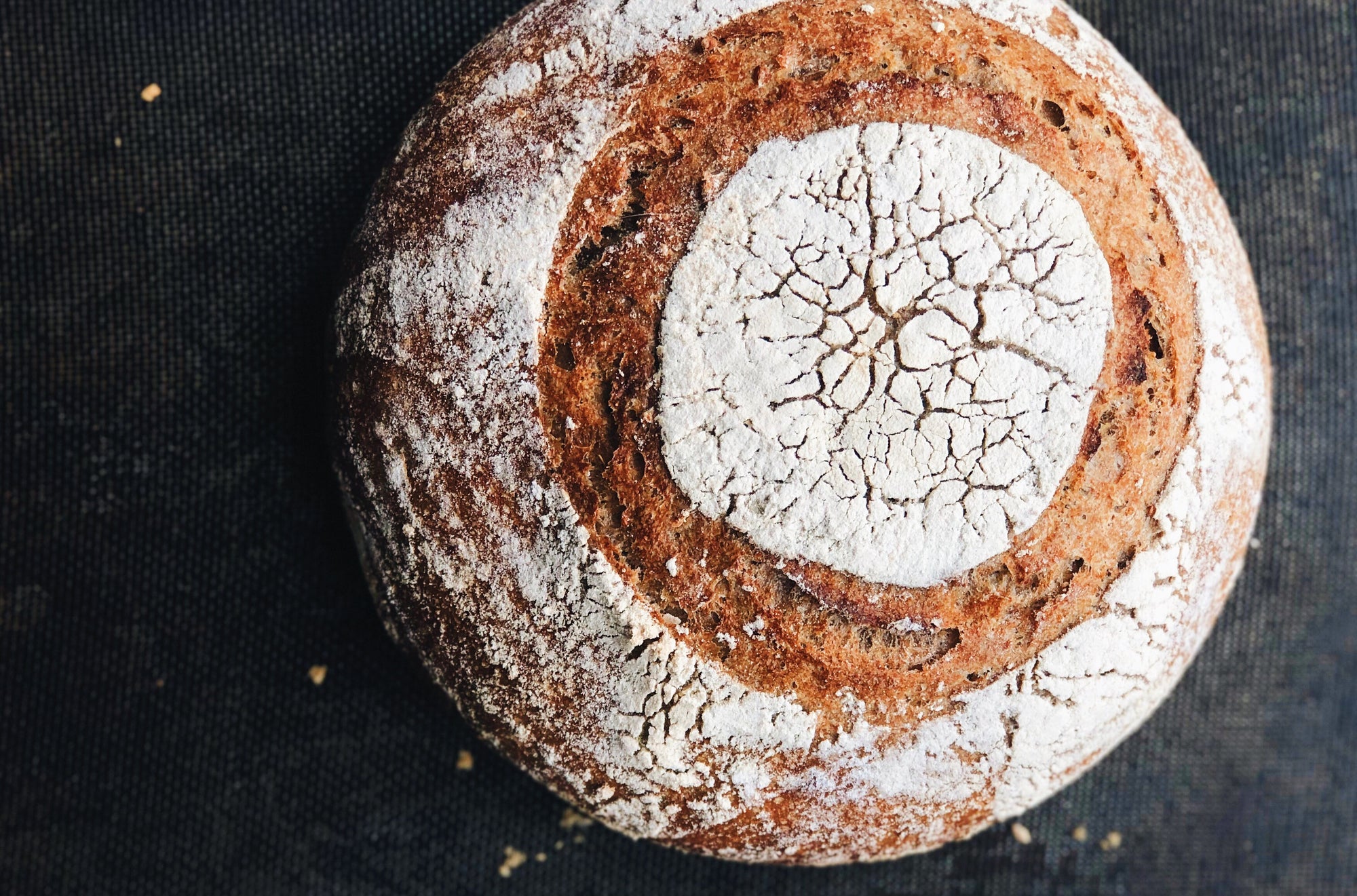We believe our Basic Sourdough Boule Recipe is the perfect introduction to sourdough baking. Once you've mastered that you may want to experiment with different flour combinations. We love adding whole grains to our sourdoughs for the added health benefits but also for the amazing texture it lends to the loaf.
Adding whole grains can be difficult at first for a couple of reasons. Whole grains tend to activate the yeast and the leavening process more quickly, which makes the entire process a bit faster. Also, the bran in whole grains can tear at the gluten, which can make your loaf lack structure leading to a denser crumb. While there is no way to avoid this completely, there are some ways that you can get the benefits of whole grains without sacrificing on rise and texture.
We like to do a blend of sifted and whole grain flours with our loaves to get the best of both worlds. This recipe is 60% Flourist Whole Grain Red Spring Wheat Flour and 40% Flourist Sifted Red Spring Wheat Flour.
Whole Grain + Sifted Red Spring Wheat Sourdough
Yield: 2 Loaves
600 grams Flourist Whole Grain Red Spring Wheat Flour
400 grams Flourist Sifted Red Spring Wheat Flour
850 grams water (between 82-85°F)
175 grams sourdough starter
25 grams salt
Follow the instructions from the Basic Sourdough Boule but keep an eye on your bread. If you find that it is proofing too quickly, shorten the time between folds to 20-25 minutes. This will depend on the warmth of your house and how active the yeasts are in your sourdough starter.
Note: a kitchen scale is required for this recipe as we don't recommend attempting sourdough bread without one. Shop our favourite kitchen scale here.
Browse all of our sourdough resources here.



Comments
Hi Jess – this is a bit of a trickier question to answer over the internet, one thing that might help is taking the temperature of your dough. You want to aim to have it between 74-82 degrees F, and if it is getting too warm you can shorten the time between your folds. Same goes for if there is excess gas that makes it seem like your dough is deflating rather than growing in volume, you might need to get to the shaping phase a bit more quickly so that you can get your dough into the fridge. I hope this helps!
How do you know if the dough is proofing too quickly? I noticed that my dough breaks when folding and I think that’s when I’ve ruined it (or perhaps over proofed) and end up with a relatively flat dough.